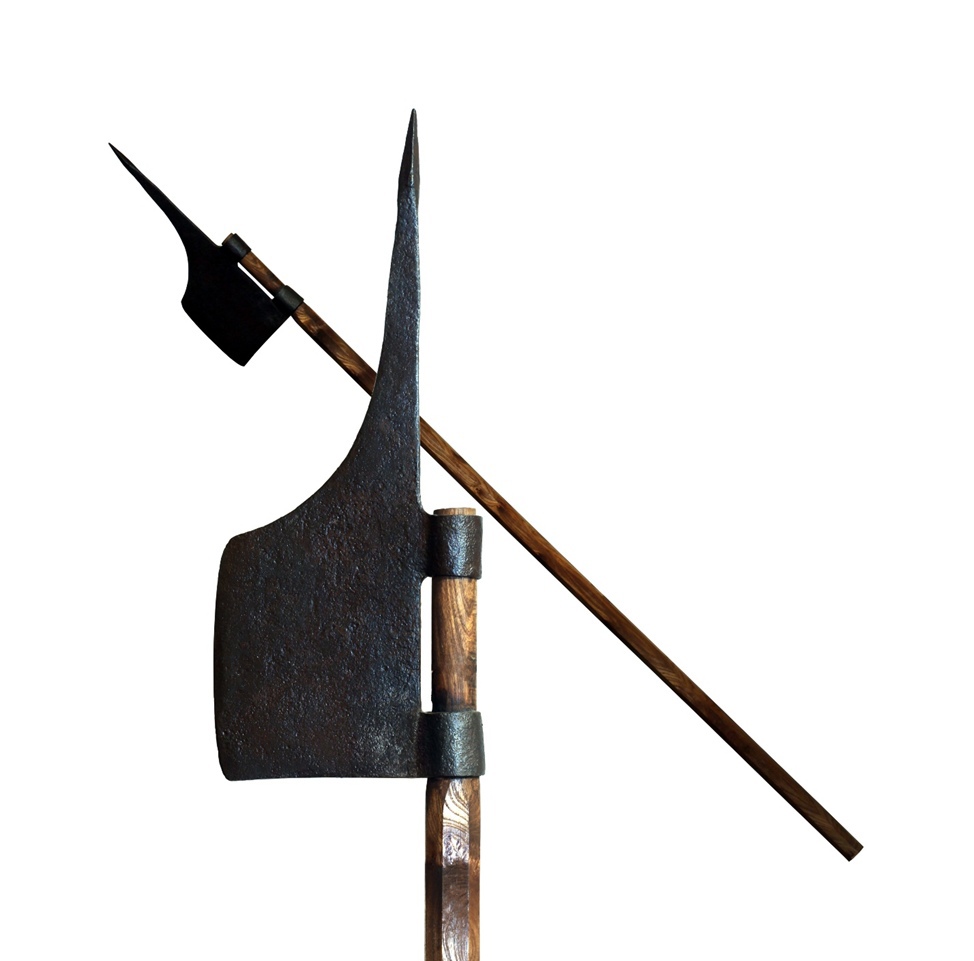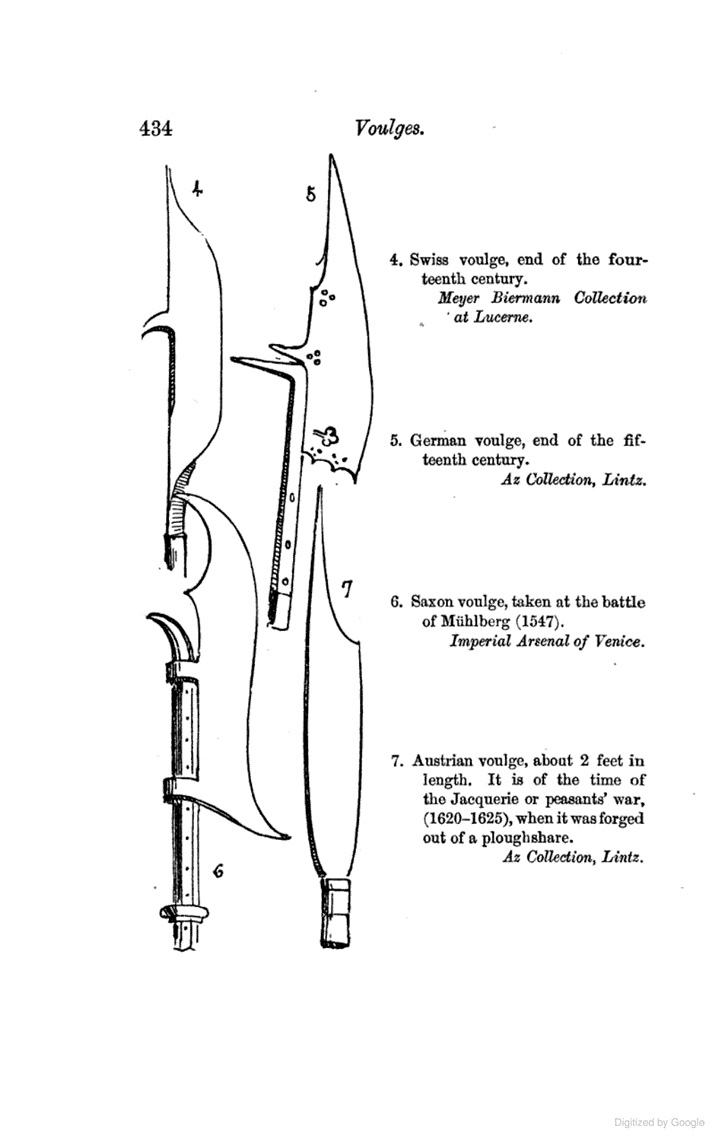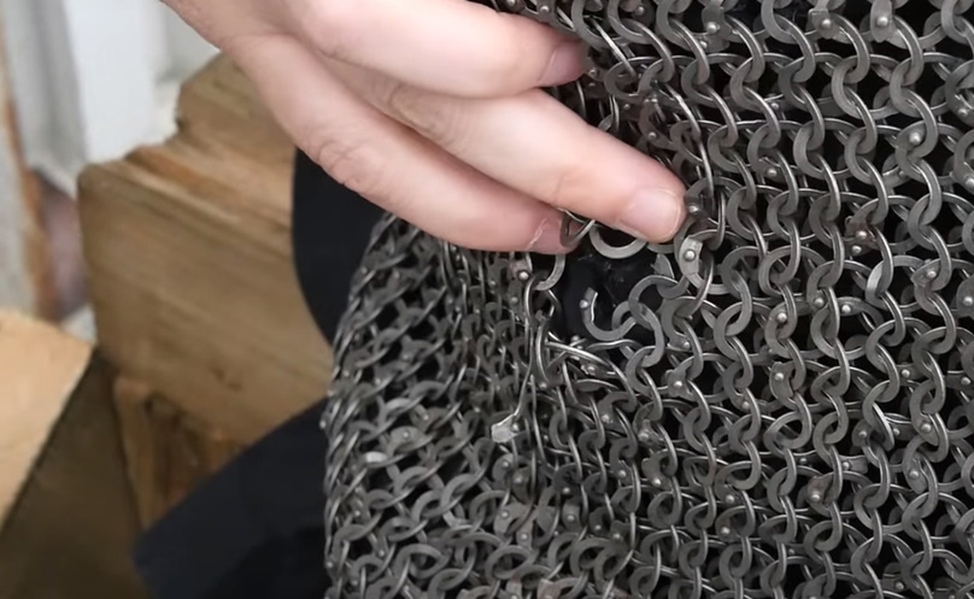
No products in the cart.
Voulge is a polearm, which was a transitional instance of an axe for subsequent transformation into a more famous halberd. Voulge was made from the end of the 13th century and was used until the middle of the 17th century. Like any polearm, it was distinguished by its cheapness relative to long-bladed blades and was widely used in the infantry troops of medieval feudal rulers.
The history of the appearance and features of voulge
Axes have
been used since the appearance of the biface on the shaft in the Stone Age,
familiar specimens appeared in the Bronze and Iron Ages. Axes have been
actively used in battles since ancient times, mainly by barbarian tribes.
Naturally, based on the conditions for improving body protection and methods of
warfare, battle axes also needed to be adjusted to new conditions.

During the
Middle Ages, it was necessary to change weapons for new conditions of battle.
It required weapons that could be used against infantry and resist cavalry.
Knight cavalry has always significantly influenced the outcome of the battle
during the Middle Ages, thanks to armor and good organization.
Halberd and
glaive became such weapons by the end of the 14th century. Voulge was the
predecessor of the halberd, he lacked the usual spear tip for a halberd and had
a slightly pronounced bec de corbin or was absent altogether. The length of the
military voulge was 180 cm, and the forest up to 250 cm. The length of the
blade, depending on the specimen, varied from 50 to 80 cm and was pointed.
Instead of one attachment point, following the example of axes, two rings
attached to the shaft appeared. This was done to reduce the likelihood of the
shaft breaking. By design, it somewhat resembles a bardiche, but it does not have
a characteristic space between the shaft and the blade for convenient
interception and protection of the hand.

The
cheapness of forging such weapons provided the possibility of quick
replacement. Since wrought iron for manufacturing, although it had the
necessary carbon level of 0.6-0.9%, it contained slag, which violated the
structure of raw materials and increased the fragility of the finished product.
The
reliability of weapons in the medieval era could be ensured by crucible steel,
which had fewer impurities and did not require the welding method of
manufacturing the famous Damascus steel. But crucible steel was expensive and
was purchased in the Middle East.
The voulge
was spread from the late 13th to the middle of the 17th century in the territories
of modern France, Austria, Switzerland and Saxony. In Burgundy, they were
equipped with crossbowmen from the arrière-ban (vassal militia). It was
actively used by the French during the Hundred Years' War.
How good was Voulge in
battle
The Voulge,
thanks to its wide blade, was effectively used against an opponent in chain
mail with a gambeson. Probably, the slashing blow would not have been able to
penetrate the chain mail rings, but inertia allowed to inflict closed wounds,
rib fractures and serious bruises. It must be remembered that the main task in
a medieval battle was to put the enemy out of action and such damage and
injuries were enough.
With the
help of a pointed blade, a piercing blow can be inflicted, which would have
pierced the chain mail and probably passed through the gambeson and led to open
wounds.

An example
of the consequences of a stabbing blow on chain mail (the medieval ones were
not of such high quality, unlike the modern copy presented in the photo).
Against
plate armor, voulge was not that good, since the inertia of the blow was
scattered across the armor and absorbed
by the gambeson. It was also not possible to break through the knight's armor
with the help of chopping and stabbing blows. Halberds with short blades or in
the shape of a crescent had the ability to strike blows that concertised
inertia at one point.
For French
crossbowmen, the voulge was an excellent option for use in close combat along
with blades. It allowed the shooters to keep their distance in a direct collision
and hit slashing blows that could break the enemy's polearms.
Due to the
wide blade of the axe, the voulge could be used against horsemen. It could be
used by analogy with the bardiche for blows on the legs of a horse to knock
back the rider.
End of the voulge
Since the
middle of the 16th century, the gradual decline of the voulge began, since it
was no longer manufactured for arming the main troops and the militia began to
use it. There were several reasons. Being a transitional type of weapon from a
battle axe to a halberd, it was no longer used in the army. The halberd was
much more effective during the battle. Crossbowmen often equipped with voulges
have lost effectiveness with the widespread proliferation of firearms. Being a
transitional type of weapon, it existed for a long time, giving way to a more
advanced halberd, which was used until the middle of the 18th century.